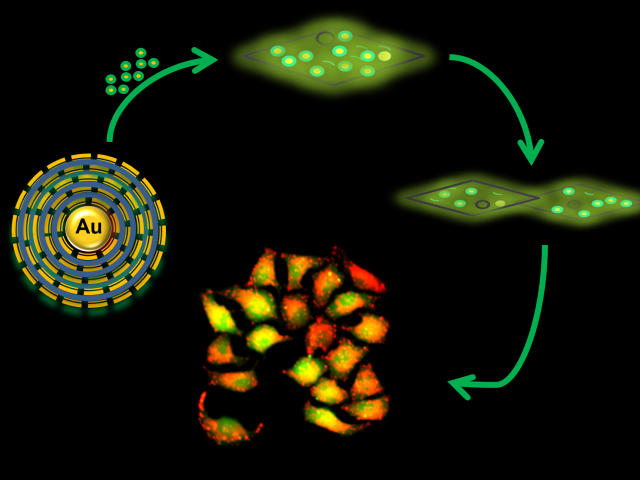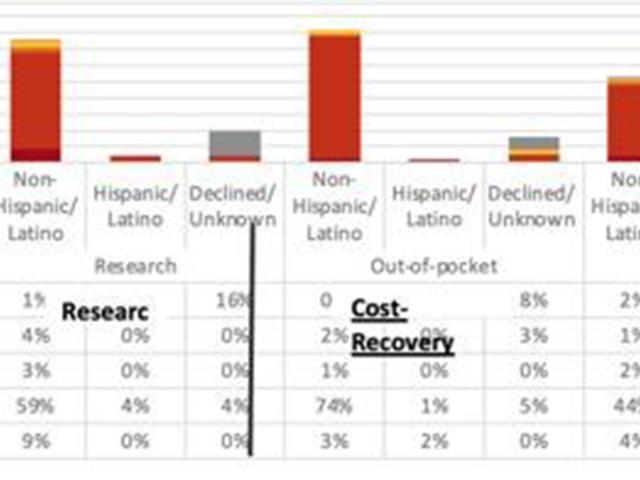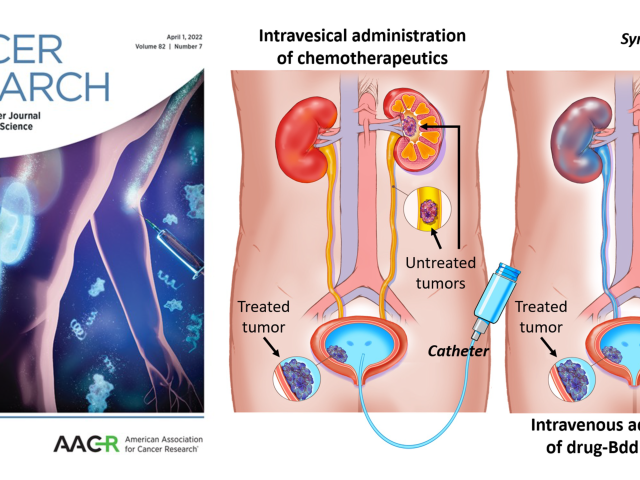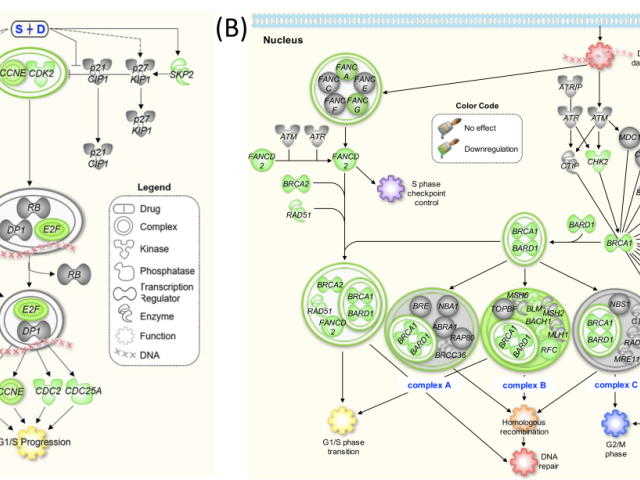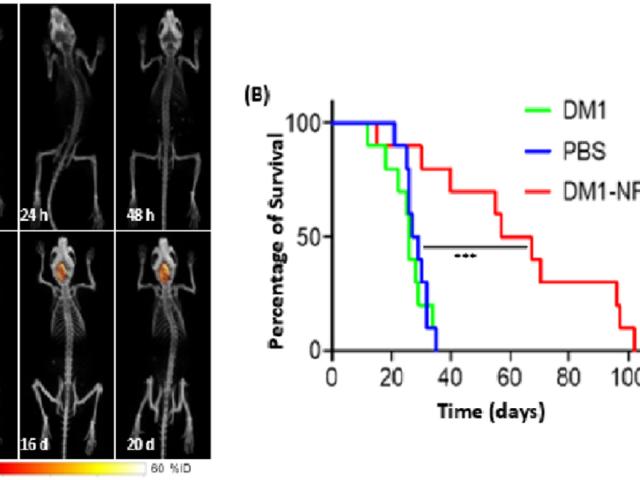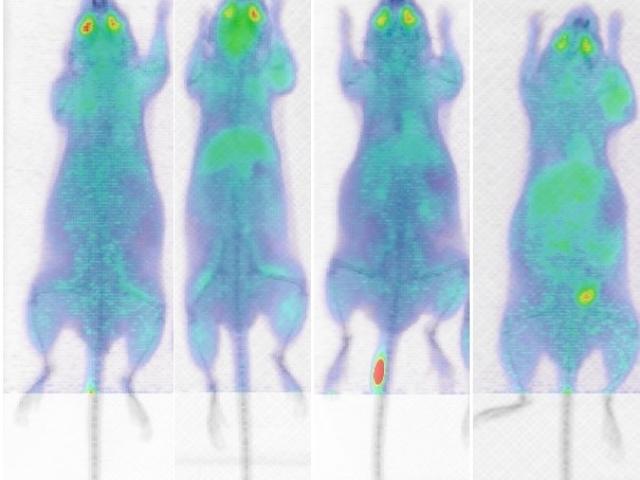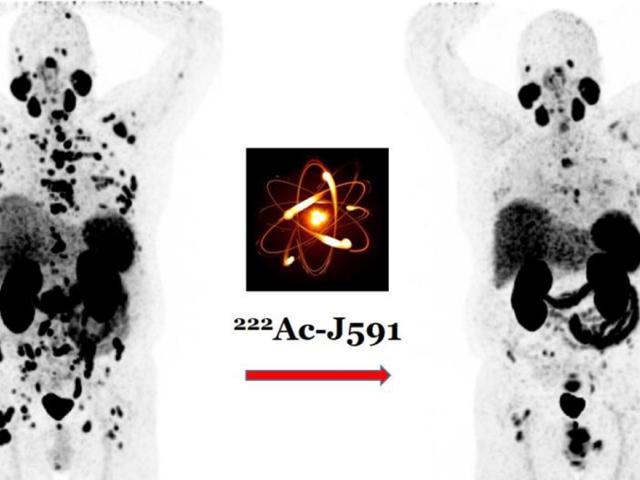Multifunctional delivery platform to maximize nucleic acid combination therapy
The Tung lab has pioneered a layer-by-layer fabrication technology for nucleic acid-containing therapeutics, including small interfering RNAs (siRNAs), micro RNAs (miRNAs), peptides, and their combinations. The prepared nanovectors effectively deliver multiple active components, thereby boosting therapeutic efficacy with minimal off‐target effects. The lab has demonstrated the nanovectors'...
Effects of health economics on healthcare disparities
Addressing healthcare disparities that can be created with an uneven socioeconomic distribution of diagnostic tests and therapeutics. Here are a few examples from work we have produced through this initiative:A network-wide review of patients with access to prostate specific membrane antigen (PSMA) Imaging and Therapy demonstrated that non-hispanic Whites were more likely to obtain PSMA positron...
Urinary drug disposing system for treatments of kidney and bladder cancers
Most bladder cancer (BC) patients are diagnosed at an early stage. The standard treatment involves surgically removing tumors, followed by intravesical immunotherapy (Bacillus Calmette-Guerin) or chemotherapy (ITC) to eradicate any residual cancer cells. However, current ITC methods are limited, with incomplete treatment, poor patient compliance, and a high recurrence rate. Furthermore,...
Mechanisms of anticancer agents
To improve the treatment outcome, multiple drugs of distinctive mechanism but complementary anticancer activities are often used to enhance the antitumor efficacy and minimize the risk of acquiring drug resistance. Specifically, we investigate the synergistic effects of drug combinations, with the aim of developing new therapeutic strategies, such as drug-induced targeting approaches (Fig. 6,...
Multifunctional nanofiber for convection-enhanced delivery of theranostics to diffuse intrinsic pontine glioma
Of all pediatric cancers, diffuse intrinsic pontine glioma (DIPG) is the most aggressive. Focal radiotherapy only prolongs patient survival for a few months. Chemotherapy does not improve patient survival as DIPG is intrinsically resistant to most chemotherapeutics. Furthermore, our brains naturally prevent most drugs from reaching the brain tumor. Convection-enhanced delivery (CED), is a direct...
Development of small molecule probes for PET imaging in oncology
Under the guidance of Dr. John Babich, Dr. Kelly designed and synthesized many small-molecule radiotracers for cancer imaging. Chief among these probes were 18 fluorodeoxyglucose (F)-labeled compounds targeting prostate-specific membrane antigen (PSMA), a validated biomarker for metastatic castration-resistant prostate cancer. These ligands are characterized by high tumor uptake and reduced...
Development of theranostic ligands and targeted radiotherapeutics
In work that has been collectively recognized by the European Association of Nuclear Medicine in the form of a Young Investigator Award, and by the Society of Nuclear Medicine and Molecular Imaging in the form of an Alavi-Mandell Award, Dr. Kelly has exploited serum albumin as a method of modifying the pharmacokinetics of small molecule prostate specific membrane antigen (PSMA) ligands, thereby...
Imaging metabolism
The Kelly lab is currently funded by the National Institutes of Health (NIH) (National Institute of Biomedical Imaging and Bioengineering (NIBIB) R21 Trailblazer Award) to develop carbon 11 (11C)-labeled isotopologues of pyruvate for imaging prostate cancer. Prostate cancer is the most widely diagnosed cancer in men, yet few validated biomarkers for accurate disease staging, identification of...
Imaging biomarkers in heart failure
Awards or Grants: National Cancer Institute (NCI) R21The Kelly lab is currently funded by the NCI to validate imaging biomarkers of cardiotoxicity. Many patients are at risk of developing cardiotoxicity as a result of their cancer treatment. Damage is typically detected by echocardiography, but by the time it can be seen via this modality, the damage may be irreversible. The lab’s hypothesis is...
Alpha particle based theragnostics
Clinical trial-based research to expand the use of alpha particle-based therapeutics. Actinium-225 is a radiopharmaceutical we will be producing in the first-of-its-kind alpha labeling lab in an academic institution. The image demonstrates an example of how we hope to benefit patients seeking cancer care through this institutional lab.IRB Approvals:IRB #AML02. A Phase I/II Study of Venetoclax and...



